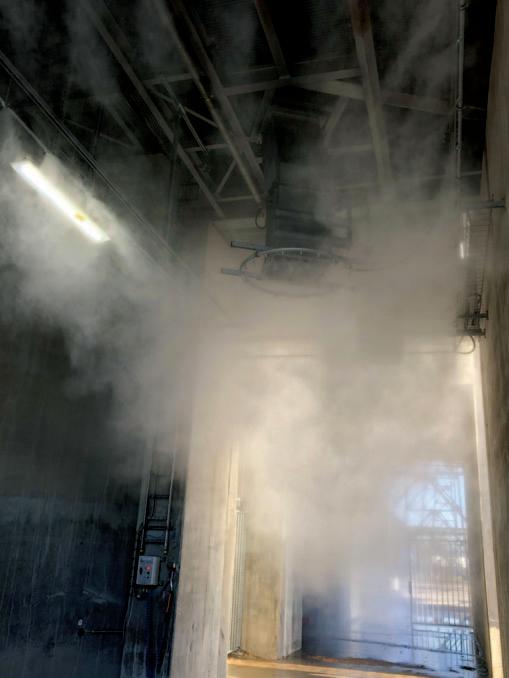
8 minute read
Spraystream removes dust particles from the air when handling grain
Spraystream fog cannons have become increasingly popular in recent years due to their effectiveness in suppressing dust and reducing fire risk in grain handling applications. The Spraystream machines emit a fine mist of water droplets that can capture dust particles and prevent them from becoming airborne, which is especially important in industries where dust is a significant hazard.
A Safer And Healthier Environment For Workers
Grain handling facilities, in particular, can benefit greatly from the use of fog cannons. These facilities handle large volumes of grain, which can produce a significant amount of dust during the handling process. This dust can be a major health hazard for workers and can also create a risk of explosions and fires. In addition, the dust can settle on equipment and machinery, causing them to malfunction or break down.
By using fog cannons, grain handling facilities can significantly reduce the amount of dust in the air, creating a safer and healthier environment for workers. Spraystream cannons can also reduce the risk of fires and explosions by preventing dust from accumulating on surfaces and equipment.

The effectiveness of Spraystream cannons is due to the fact that they produce very small water droplets. These droplets are so small that they can float in the air and capture dust particles as they pass through. As the mist settles, it pulls the dust out of the air and onto the ground, where it can be easily cleaned up.
Spraystream Reduces The Risk Of Fires
In addition to their dust suppression capabilities, Spraystream cannons can also be effective in reducing fire risk in grain handling facilities. Grain dust is highly combustible and can ignite very easily, leading to fires and explosions. By reducing the amount of dust in the air, Spraystream cannons can lower the risk of ignition and reduce the potential for fires.

SPRAYSTREAM FOG CANNONS: A HIGH- QUALITY SOLUTION
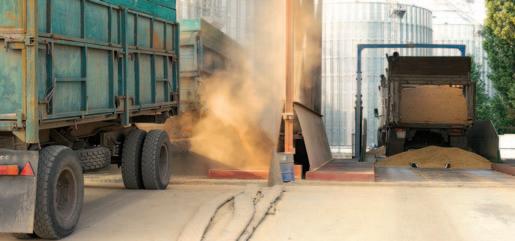
Spraystream offers an extensive range of fog cannons with various options. These machines create a micro-droplet mist curtain with a range of up to 150 metres, in part thanks to the use of high-quality materials:
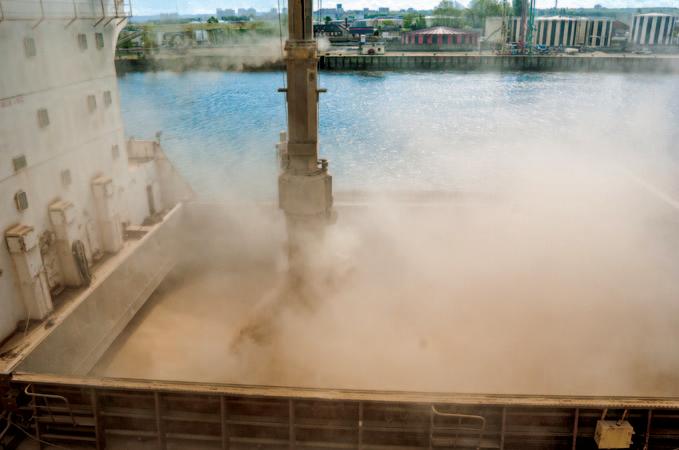

The patented cone shape is v aerodynamic and made from a composite. This high-quality material creates lighter machines, has an attenuating effect, and has a lower risk of corrosion. The cone shape leads to a maximum range with a minimum capacity and water.
Spraystream also uses GRUNDFOS v maintenance-free pumps of the highest quality.
The company’s intuitive machines are v also very easy to use and can be controlled remotely.
The Spraystream machines have a v default electrical oscillation and the fans can withstand high performances. The wind guides make sure that a v turbulent air flow is converted into a laminar air flow. This leads to minimum water flow losses and thus to more targeted and more efficient atomizing. The atomizers can be replaced easily v because Spraystream uses rapid-lock systems.
Fixed Nozzle Systems And Customization
Not every dust problem can be solved in the most efficient way with standard machines. That is why Spraystream also provides customized systems. This can range from minor adjustments to standard machines, or completely customized installations. This way Spraystream can perfectly meet the customer’s needs and budget. A team of engineers has the knowledge and experience to develop custom-designed atomizing systems. An assembly and maintenance team ensures perfect installation and after-sales service over the whole world through a dealer network.
In conclusion, Spraystream atomizing systems are an effective tool for reducing dust and fire risk in grain handling facilities. By emitting a fine mist of water droplets, they can capture dust particles and prevent them from becoming airborne, creating a safer and healthier environment for workers. They can also reduce the risk of fires and explosions by preventing dust from accumulating on surfaces and equipment.
When a dust problem can not be solved by a standard fog cannon, Spraystream can provide customized systems.

F. Harley caps Rotaside wagon tippler ‘high volume surge dust’ with ADS™ Dry Fog System at NTPC, India’s largest thermal power generating company
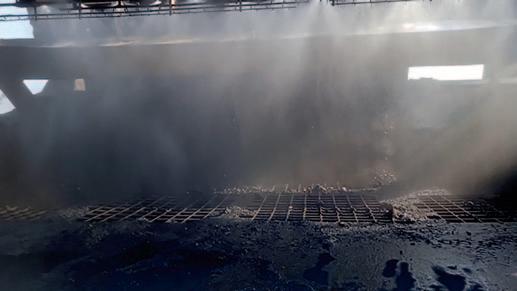
National Thermal Power Corporation (NTPC), India’s largest power company scored a successful debut with F. Harley’s installation of the ADS™ Dry Fog based dust suppression system (in technical collaboration with TRC (USA) world renowned dust control specialists in bulk material handling) at the NTPC Unchahar thermal power plant for its Rotaside wagon tippler application, replacing the plain water dust suppression system, writes Nirav Shah, Dy. Managing Director, F. Harley & Co. Pvt. Ltd.
The order was placed in end of 2019 and was slated for commissioning in March 2020. Due to the Covid-19 pandemic the installation was done in phases and the system was ultimately commissioned in end January 2022. Subsequent to the commissioning, NTPC put the system to test for full 30 days, and the results were an astounding 80% plus average reduction in the TSPM, with practically no visible dust emissions escaping from the emission zone (the grizzly area) into the work zone (outside the grizzly area and shed), despite the challenges of the application being a largely open one. NTPC observed that along with the fogging, the containment recommendations from F. Harley were found very useful in achieving the results.
The Challenges At The Rotaside Wagon Tippler Area
Rotaside wagon tipplers have v restricted underground hopper depths, leading to material being dropped almost at ground level, resulting in a significant dust nuisance. Constructing a shed in the tippling v area was not feasible due to the plant’s operational constraints.
The tippling area being open/semi- v open tippling one was far from an ideally controlled one.
The surge load, high volume v operation of the Rotaside WT generates dust-laden high-velocity displaced air plumes in the emission zone (Grizzly Area). Displaced air gushing out from the v emission zone (over the Grizzly Area) into the work zone (beyond the Grizzly Area) is a primary cause of dust nuisance. Containment of the emission zone v (over the Grizzly Area) was essential to prevent dust dispersion. Avoiding crosswinds entering the v emission zone was crucial to make fog and dust agglomeration effective. Frontal containment wasn’t possible v as payloaders needed access to the Grizzly Area.
Eventually, a minimum possible containment strategy was worked out and settled upon which primarily relied on the existing sides of the grizzly shed, with some partial frontal containment, and just enough coverage of the grizzly to minimize the escape of displaced air.
ADS™ - THE DRY FOG SYSTEM BY F. HARLEY AT THE ROTASIDE WAGON TIPPLER
The ADS™ dry fog dust suppression system, employs dual fluid sonic nozzles, generically known as air driven acoustic oscillator nozzle which is the heart of the dry fog dust suppression system. These nozzles generate dense dry fog which is defined as 0–30 micron droplets, similar to natural fog, which is created by atomizing water through injection of compressed air in a ratio at sonic velocity.
Advancement to these air driven acoustic oscillator nozzles or the 'sonic type' nozzles under the FP Series by The Raring Corporation, USA are unique to the ADS™ System, thus making it more maintenance friendly and durable.
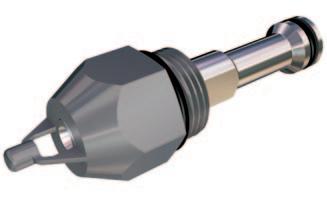
Integral to the ADS™ dust control strategy is the containment of the dust which is the first step to the success in dust control, which helps in retarding the high velocity dust laden displaced air to help the fog to mix with the airborne dust viz. agglomeration of fine water droplets with like sized dust particles to gain mass and settle through gravity. Effectively, the ADS™ Dry Fog dust suppression system dampens the dust generated and not the material unlike plain water dust suppression systems (PWDS) whose working principle is based on wetting the material up to 1.5% of the material handled, whereas the effective moisture addition for the ADS™ Dry Fog system is only 0.1% approximately.
Considering the effectiveness in dust control in the US coal industry, in October 2009, the USEPA designated both passive enclosure systems and fogging systems (dry fog systems) as best demonstrated technologies for coal handling. Essentially, the containment is termed as passive dust control, and the fogging is termed as active dust control, which is like the Chinese philosophical principle of ‘Yin (passive) and Yang (active)’ — of inseparable and contradictory opposites existing in harmony.

DUST CONTAINMENT: THE FIRST STEP TO DUST CONTROL IS — DON’T LET IT OUT
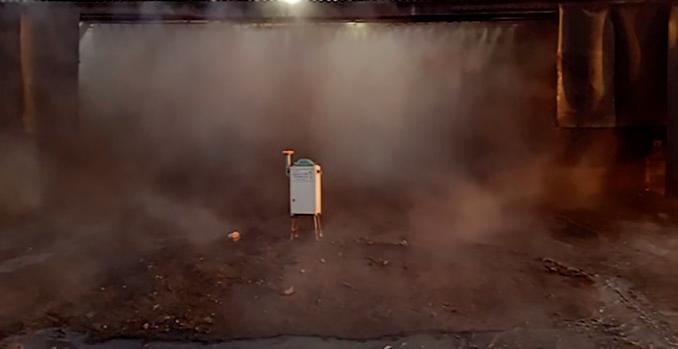
Quite often the importance of dust containment is undermined and not appreciated. To have an idea of dust generation without and with dust
Fogging Without
generation of the ADS™ Dry Fog system (higher than the rate of dust generation) ensures no visible dust escape from the emission zone to the work zone.
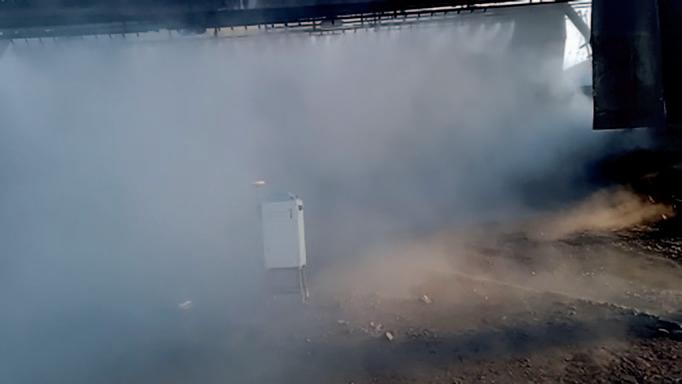
Fine water droplets and their v density – the ADS™ system produces ultra-fine water droplets (0–30 microns), creating a dense fog that effectively captures respirable dust, surpassing traditional systems with larger droplets.
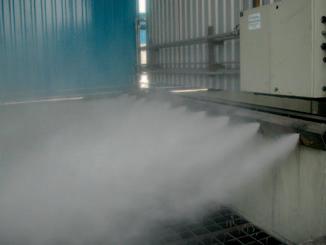
Fogging With
Spineful dense fog – the ADS™ v system’s FP Nozzles generate a dense, spineful fog that counters rising dust plume velocity, promoting maximum agglomeration and dust emission control above the Grizzly.
containment, respectively, over the Grizzly, and both with fogging, given above are a few pictures which show the difference in the escape of visible dust into the work zone from the emission zone — which can be totally avoided with strategically applied dust containment. To be precise, dust containment is an integral part of dust control, which would otherwise make a great ultra fine, dense fog useless in controlling dust.
ADVANTAGES AND SUCCESS FACTORS OF THE ADS™ DRY FOG BASED DUST SUPPRESSION OVER PLAIN WATER DUST SUPPRESSION SYSTEMS
Dust containment – containment v around and within the emission zone is critical to prevent crosswinds from entering and to stop dust-laden air from escaping. This allows for effective agglomeration of fog and dust, making particles heavy enough to fall back to the source. No visible dust v escape from the emission zone to the work zone –unlike traditional systems, the dust containment and dense fog
Agglomeration – the ADS™ Dry Fog v system achieves higher agglomeration of fine water droplets with dust particles, making airborne dust heavier and facilitating gravity-based settling. Drastic reduction of water v consumption and elimination of water flooding – the ADS™ system significantly reduces water consumption by up to 300% compared to traditional systems, eliminating the need for water flooding in the underground area below the hopper.

Conclusion
NTPC Unchahar thermal power plant expressed its satisfaction with the effectiveness of the ADS™ Dry Fog System installed by F. Harley, upon putting the system to a full 30 days test, resulting in increased interest to change over from the conventional plain water dust suppression systems in other NTPC plants. Effectively, with this installation and all it’s challenges, and with the convincing test results, it is yet another breakthrough and a highly successful one for the ADS™ Dry Fog based dust suppression system by F. Harley after the highly appreciated and successful installation of the ADS™ Dry Fog system for the track hopper installation at Paradip Port Trust in 2018. Alongside, many other companies are satisfied users of the ADS™ Dry Fog systems for the Rotaside Wagon Tipplers in the thermal power industry by the sheer elimination of visible dust emissions during the tippling operation for this highly challenging dust generating and common application in the Indian industry, while the ADS™ Dry Fog system remains the ‘war horse’ for dust control for bulk material handling applications across the thermal power, steel, mining, ports and cement segments.










